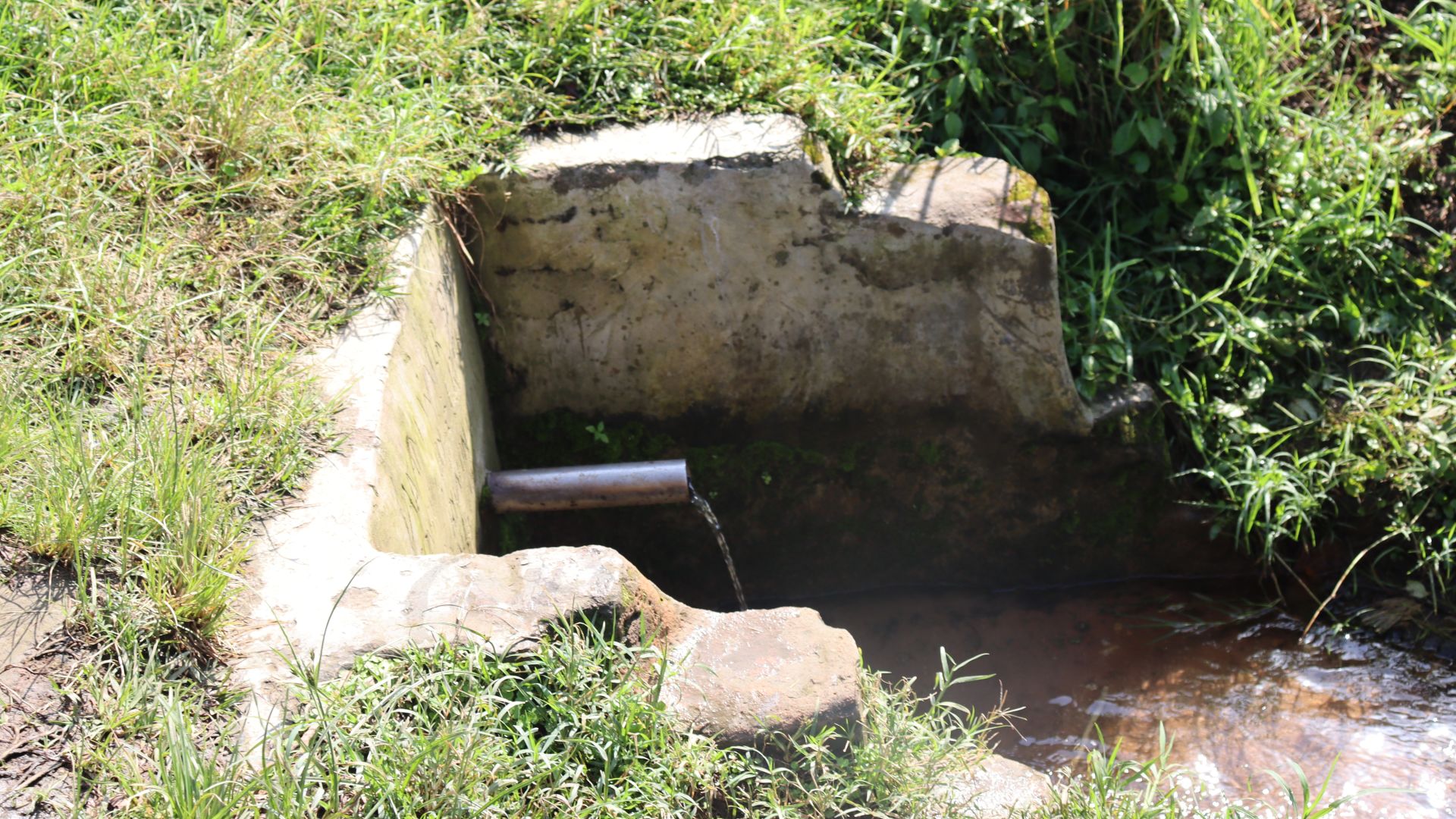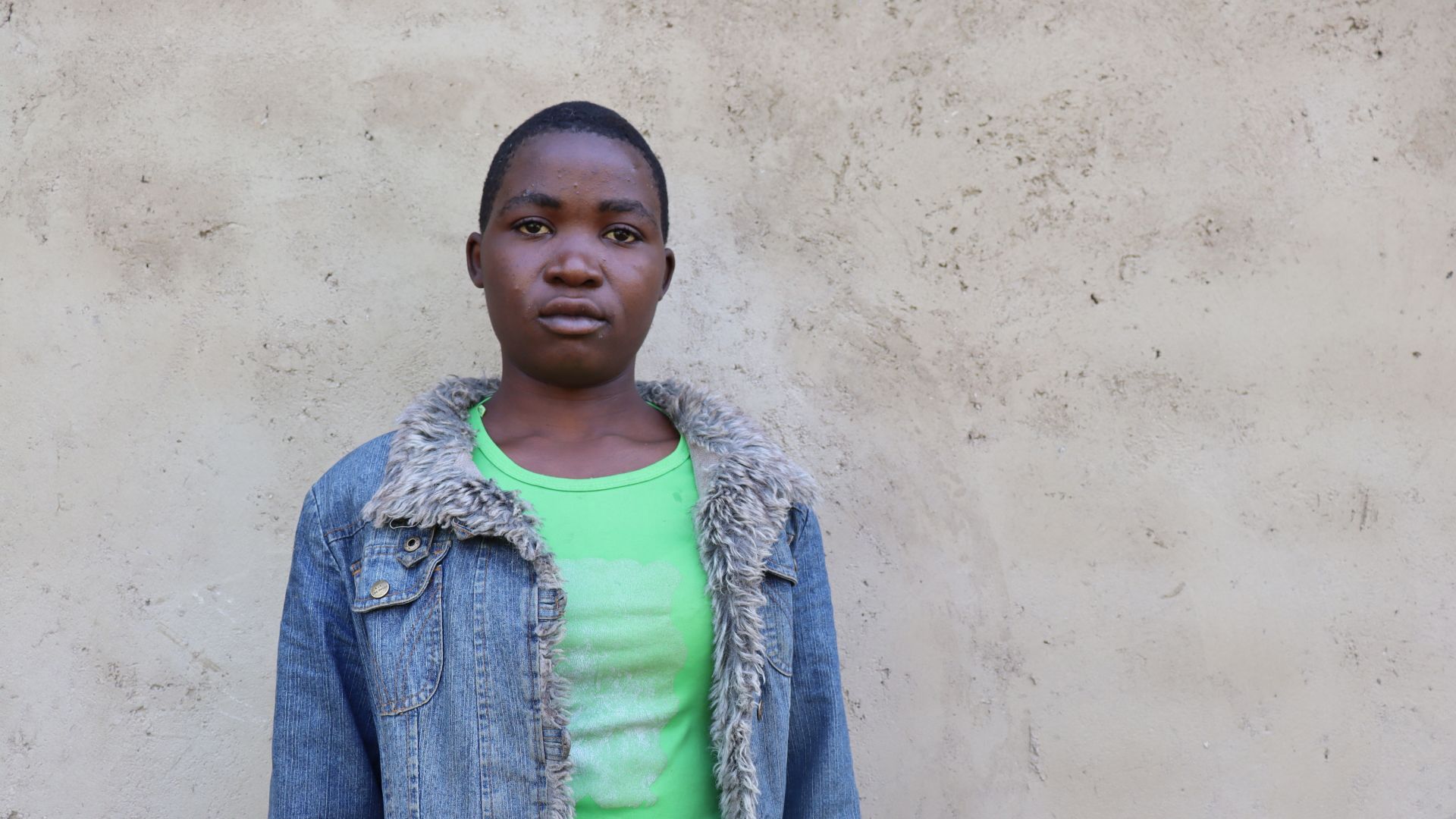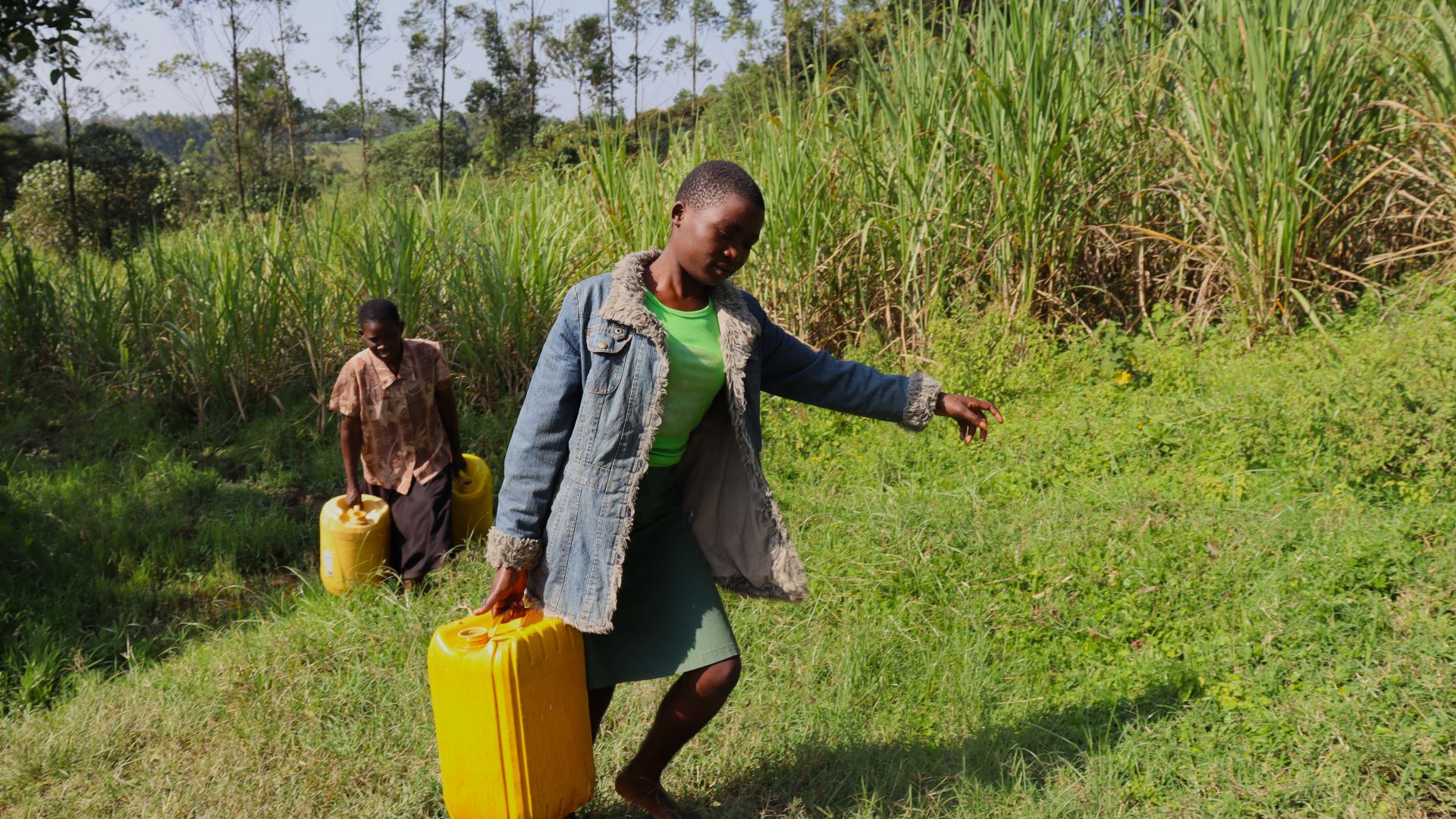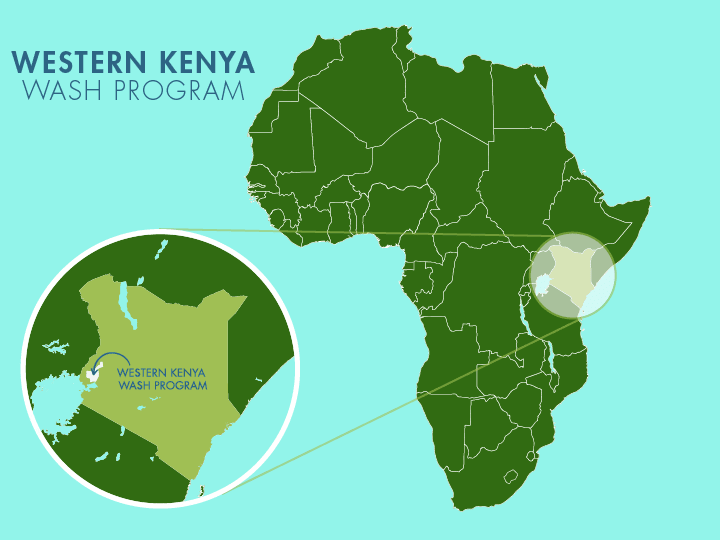The Panyako Anami Spring should sustain hope for the 330 residents of Shanda. Instead, years of disrepair have turned it into a daily source of struggle—long waits, muddy access, and water they can’t trust. The only other source of water they have is contaminated surface water.

The alternative water source.
Field Officer Jemmimah Khasoha explained, "The waterpoint is very untidy and in a bad state. It has no fence and [there's] mud all over, hence it is very difficult to access and fetch water easily. The community members who tried to construct the spring did not have good workmanship, and so the place is so squeezed [that] water users cannot fetch water with ease. Cows, sheep, and goats graze just two meters away from the source, thus drink at the same place. This is a clear indicator that contamination is high."

The spring in need of repair.
Seventeen-year-old Norah has grown accustomed to the challenges that water presents in her life.

She paints a picture of her experiences. "There are two major occasions [that] makes fetching water take a long time. During [the] dry season, we normally have overcrowding and congestion, which pushes one to wait for the ones that came early to fetch water fast. On the other hand, when the rains fall in its season, there is poor drainage, and this makes the area muddy, which disables us from accessing the water easily."

Residents wait in line to collect water at the muddy spring.
Unfortunately, like many girls in Western Kenya, Norah doesn't have a choice. Culturally speaking, it's her job to help fetch water for her family, no matter the cost.
"I don't feel good [about] fetching water because of the accessibility. The area is muddy, and most of the time, you come back after you have fallen several times, and it is easy to break your container. If there could be another chore to do over water, I would prefer [it]. Just because I am a girl and the water task is mostly [a] woman's role, I have to do [it] whether I feel like [it] or not."

Norah hauls her heavy jerrycan home.
Community frustrations can sometimes escalate into conflict. "During the time of [a] dry spell, many people come, and some who are strong feel they should fetch water before others because they can easily push you to give way. One day, I had to exchange words because I was mad with one girl who came after me and wanted to fetch water before me. We ended up in a fight, which made me hate going to fetch water up to date," she continued.
The time she spends waiting for water robs Norah of the opportunity to put energy into her side hustle.

Norah (left) waits for her turn.
"If that time is spared, I would have gone to plant sukuma (collard greens), which helps me to get pocket money to use at school. When the queue is found, it affects a lot of people, especially the young, who do not have a voice," she lamented.
Norah's walk to the waterpoint is filled with anxiety, unsure what she will find. But the walk back isn't any better; she never knows when water-related illnesses will strike again.

"[I] am worried about safe water because if I get sick, I will not be able to go to school and study well. Again, I will not be able to plant the vegetables which will give me money to buy shoe polish, pens, and even toothpaste and [a] brush."
Norah has a clear vision for her future; she knows what she needs to do and what it takes to succeed. A crucial building block for her goals is clean, sufficient water.
Protecting the community spring will give Norah the opportunity to chase her dreams and build another generation of farmers in her community, hopefully a whole generation that thrives with clean water.

Norah is doing dishes, her crops pictured behind the table.
"I love farming because it has helped us go to school and also be brought up well economically. This has motivated me to become a farmer in [the] future. I believe with sufficient safe water, all my dreams shall come to pass," she asserted.
Steps Toward a Solution
Our technical experts worked with the local community to identify the most effective solution to their water crisis. They decided to safeguard the existing flowing spring.
Spring Protection
Springs are natural water sources that originate from deep underground. As water travels through various layers of the earth, it undergoes a natural filtration process, making it cleaner and safer to drink. To protect these spring sources from contamination, we construct a waterproof cement structure around layers of clay, stone, and soil. This design channels the spring water through a discharge pipe, facilitating easier, faster, and cleaner water collection.
Chlorine Dispenser
As an extra measure towards water quality safety, uniquely engineered chlorine dispensers are installed at all of our spring protection projects so community members can treat their water with pre-measured doses of chlorine. The chlorine treats any possible contamination and stays active for two to three days, ensuring water stays safe to use even when stored at home. Chlorine delivery and maintenance of the dispensers are part of our ongoing community support.
Community Education & Ownership
Hygiene and sanitation training are integral to our water projects. Training is tailored to each community's specific needs and includes key topics such as proper water handling, improved hygiene practices, disease transmission prevention, and care of the new water point. Safe water and improved hygiene habits foster a healthier future for everyone in the community. Encouraged and supported by the guidance of our team, a water user committee representative of the community's diverse members assumes responsibility for maintaining the water point, often gathering fees to ensure its upkeep.

 Protected Spring
Protected Spring
 Rehabilitation Project
Rehabilitation Project


















